The AMD Radeon RX 5600 XT Review, Feat. Sapphire Pulse: A New Challenger For Mainstream Gaming
by Ryan Smith on January 21, 2020 9:01 AM ESTSynthetics
Moving on, we have our synthetic performance testing, taking a look at geometry throughput, pixel throughput, memory compression, and more.
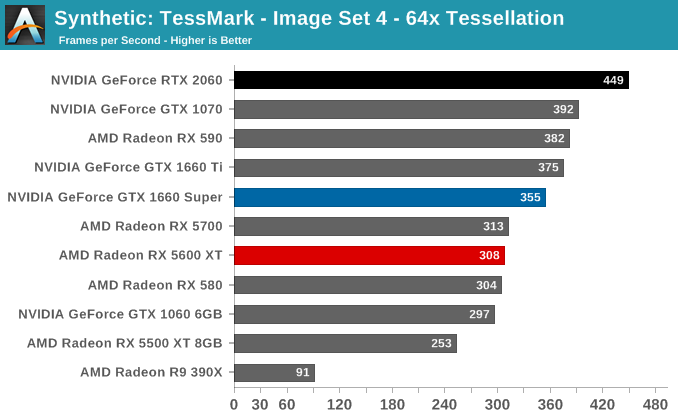
Given the significance of cutting a quarter of Navi 10’s GDDR6 memory bus, I was very curious to see what that would do for synthetic performance. But for better or worse, this has created more questions than it has solved.
The numbers listed below are accurate, in as much as these are the results I get when testing these cards. Whether they are correct, however, is another matter.
The problem, in short, is that due to AMD’s very aggressive power savings/idling implementation for their Navi 10 cards, I have been unable to get these cards to run at their full memory clockspeeds when executing the the Beyond3D Suite benchmark suite. The GPU clocks regularly pass 1600MHz like they should, however AMD’s telemetry is reporting that memory clocks are rarely hitting 7Gbps, let alone 12Gbps+. As a result, we end up with results like the pixel test below, where the RX 5600 XT is beating the RX 5700, an otherwise impossible outcome.
As best as I can tell, this issue has been going on since the launch of the Radeon RX 5700 series back in July, but it’s only now that I’ve noticed it, in large part due to the RX 5600 XT cards being slightly less aggressive in their idling. In other words, those cards are boosting to higher memory clockspeeds more often, putting them ahead of the RX 5700 and bringing the clocking issue front and center.
I’m still working on a proper fix for the issue, but for now the results with Navi 10 cards should be taken with a large grain of salt. The benchmark itself is still fine, but AMD’s aggressive power management (and lack of an easy means to disable it) is kneecapping AMD’s performance in these benchmarks.
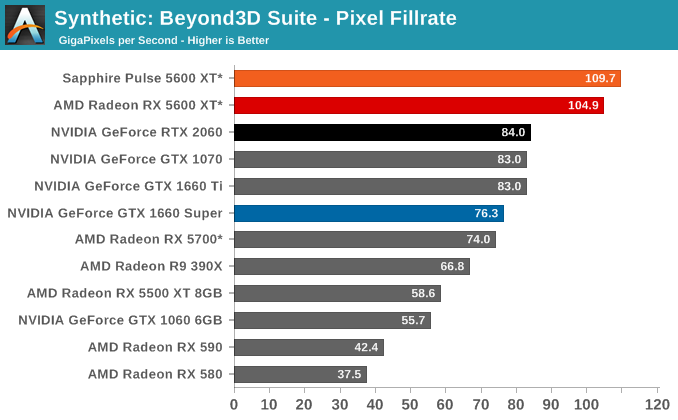

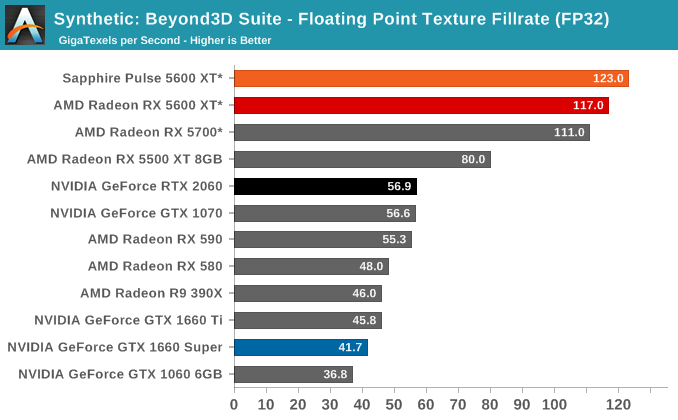
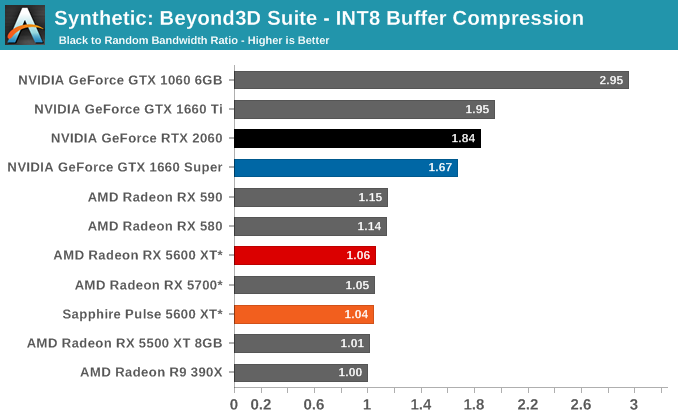
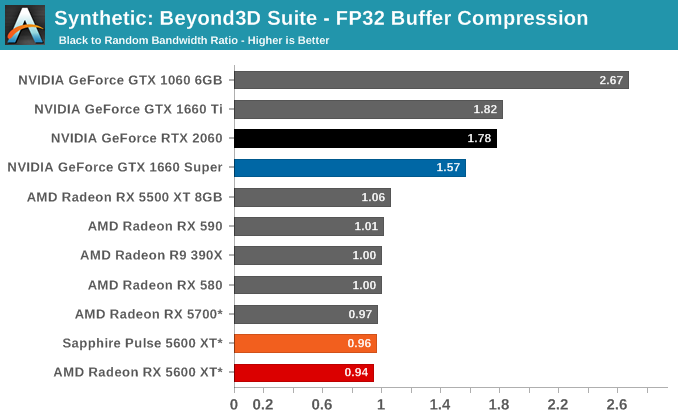










202 Comments
View All Comments
GreenReaper - Tuesday, January 21, 2020 - link
Maybe you want free and open drivers on Linux - in the kernel. I know it's not a huge market, but for flexibility's sake I have no intention of buying NVIDIA until they follow the same path.extide - Tuesday, January 21, 2020 - link
Looks to me like the Sapphire Pulse is $10 cheaper, and also faster than the 2060..Fulljack - Wednesday, January 22, 2020 - link
scratch that DLSS as more feature. Radeon has RIS which is way more better in practice rather than Nvidia AI mumbo jumbo.Spunjji - Wednesday, January 22, 2020 - link
DLSS is pretty poor visually, near-useless below 4K and only available in a few games.Ray tracing is effectively useless at the 2060's performance level, a situation that is only likely to get worse as the card ages and more games supporting RTX come out (assuming they do).
VRS is a very helpful feature, but it's still barely used - if it were playing more of a role then the 2060 would win more benchmarks.
So, I'll flip your question: why would I spend significantly more money (UK resident here) for a sometimes-faster sometimes-slower card that draws more power and has a bunch of features that I can't use or don't want?
Zizy - Tuesday, January 21, 2020 - link
So, a pretty decent although unimpressive base card (same price/performance as other AMD cards), and a surprisingly good factory overclocked one.Koenig168 - Tuesday, January 21, 2020 - link
AMD should extend the MHW:I game bundle promo to the 5600XT.Rudde - Tuesday, January 21, 2020 - link
Doesn't it have 32 CUs, not 36?TEAMSWITCHER - Tuesday, January 21, 2020 - link
I like that AMD has three tiers of performance... But, when those tiers are Medium, Low, and Ultra-Low, I just can't get excited about any of it.Korguz - Tuesday, January 21, 2020 - link
" But, when those tiers are Medium, Low, and Ultra-Low " how do you figure? or is this just more of teamswitchers anti amd comments again ??Qasar - Tuesday, January 21, 2020 - link
yea no kidding... its still better then nvidia's semi expensive, expensive and ultra expensive prices....